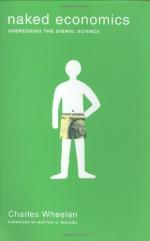
|
| Name: _________________________ | Period: ___________________ |
This test consists of 5 multiple choice questions, 5 short answer questions, and 10 short essay questions.
Multiple Choice Questions
1. What refers to the stock of competencies, knowledge and personality attributes embodied in the ability to perform labor so as to produce economic value?
(a) Differential equation.
(b) Futures contract.
(c) Index fund.
(d) Human capital.
2. Gary Becker was awarded the Nobel Memorial Prize in Economic Sciences in what year?
(a) 1988.
(b) 1997.
(c) 1992.
(d) 2003.
3. Gary Becker received the United States Presidential Medal of Freedom in what year?
(a) 1995.
(b) 2004.
(c) 2007.
(d) 1998.
4. Who led the Cuban Revolution?
(a) Roberto Goizueta.
(b) Fulgencio Batista.
(c) Nicholas Sarkozy.
(d) Fidel Castro.
5. According to the author in Chapter 7, the basic set of rules and investor should follow is to do what?
(a) Research, fact check, invest.
(b) Save, invest, and repeat.
(c) Invest, watch, sell.
(d) Research, invest, watch.
Short Answer Questions
1. What is a political thesis of Kim Il-sung which says that the Korean masses are the masters of the country's development?
2. North Korea is a single-party state under a united front led by what party?
3. What is a professionally managed type of collective investment scheme that pools money from many investors to buy stocks, bonds, short-term money market instruments, and/or other securities?
4. According to the author, there are two lessons to be learned from a monopoly situation. What is the first?
5. What contends that prices of publicly traded assets reflect all publicly available information?
Short Essay Questions
1. What stereotypical scene does the author depict of an economics student in the Introduction?
2. How does the author address the question of "getting rich quickly" in the market in Chapter 7?
3. What do economists assume about human nature and motivation, according to the author in Chapter 1?
4. What solution does the author consider for the problem with the black rhinoceros in Chapter 2?
5. Discuss the importance of information in economics. How does the author address the issue of information in Chapter 4?
6. How has the market economy contributed to a higher standard of living in America, according to the author in Chapter 1?
7. What is the basic set of rules put forth by the author for those looking to invest in Chapter 7? How are risk and reward described?
8. How is the question of income security answered by the author in Chapter 6?
9. What is a "diversified portfolio"? What does the author state regarding this in Chapter 7?
10. How do the resources of a country reflect its economic well-being, according to the author in Chapter 6?
|
This section contains 950 words (approx. 4 pages at 300 words per page) |

|




